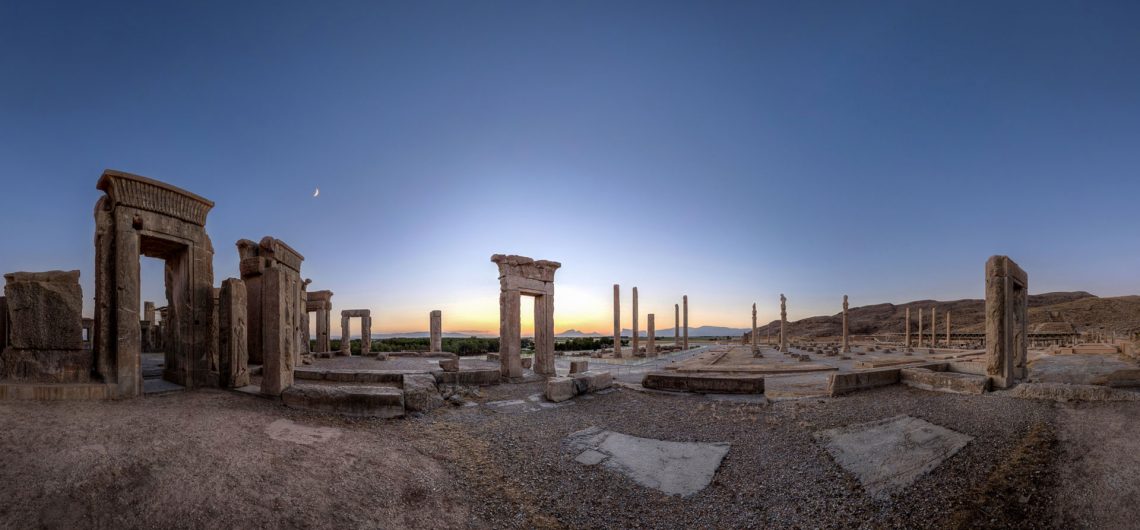In 550 B.C, Cyrus the Great, laid the foundation of a unique empire which was built on a model of tolerance and respect for other cultures and religions. After Cyrus, Darrius the Great, elevated the Persian Empire to its zenith. In his time, the empire was extended to borders of India in the east to Greece on the Mediterranean, down to Egypt an Ethiopia in Africa an up to Russia and Eastern Europe. Twenty-eight nations were rolled together under the rule of this man who was named as the king of kings.
To administer this vast empire, The Achaemenid King established four capital cities that Persepolis (near Shiraz) was the most magnificent of them all which was the most prosperous city under the sun at that time.
The Largest Empire the World Ever Have Seen
Persepolis was found around 519 B.C. on a large platform (12500 square meters) which was created of giant blocks of stone and expanded in more than 50 years.
Clues to understanding the function of Persepolis are carved in its walls and staircases. They show the representatives of the 28 different governorships of Persian Empire who came on the New Year’s Day whit exotic presents from the farthest regions of the empire to confirm their loyalty and the power of the king.
The people who had the chance of being in that grand place faced a glory that they’d never seen before.
Apadana Palace
The first global empire was built on a model of tolerance for other cultures and religions. Tolerance was the keyword in beliefs in the vast Achaemenid Empire. Even though they were Zoroastrians, the Achaemenid kings didn’t force their will to other peoples. On the contrary, they helped them. They are the first example of international religious freedom found in the history of humanity.
The remains of Persepolis clearly show this policy. The friendship between nations is masterfully shown here. There is no force or enmity. This atmosphere of peace and harmony is portrayed on the walls were the noblemen are shown holding hands and chatting with one another.
What early Greek historians wrote about the wealth of Persepolis was not an exaggeration. It was full of gold and silver and all sorts of riches.
The Capital of Achamanedian
Hundreds of clay tablets have been found with inscriptions on them reported the amount of salary paid out to different workers such as woodworkers in Persepolis. This tells us that the workers of Persepolis were not slaves. The Achaemenid employed large numbers of men and women and paid them fairly in kind or cash according to their skills and the nature of their work. There were women supervisors as well, and some women sometimes awarded double than men.
According to these clays, working women received unique benefits for their maternity — payments to cover the whole year.
Persepolis the Ceremonial Capital
Persepolis was the ceremonial capital of the greatest empire that the world has ever seen. But the beauty and glory of Persepolis lasted for only 2 centuries. It’s majestic halls and residential area burnt in flames when Alexander and his army conquered and looted the city in 330 B.C. He set fire to the palaces of Persepolis and that’s how the richest city under the sun, was no more.

